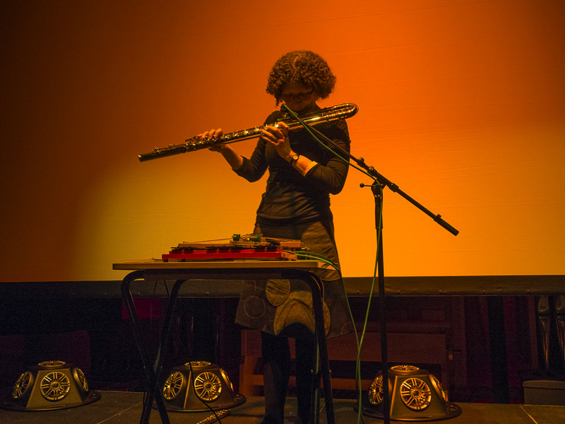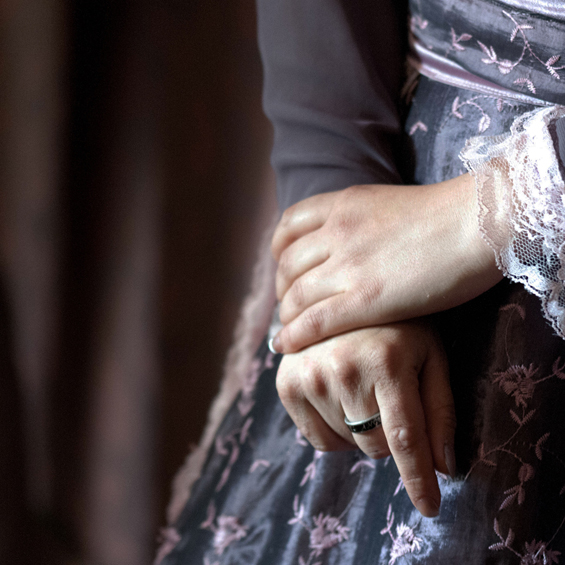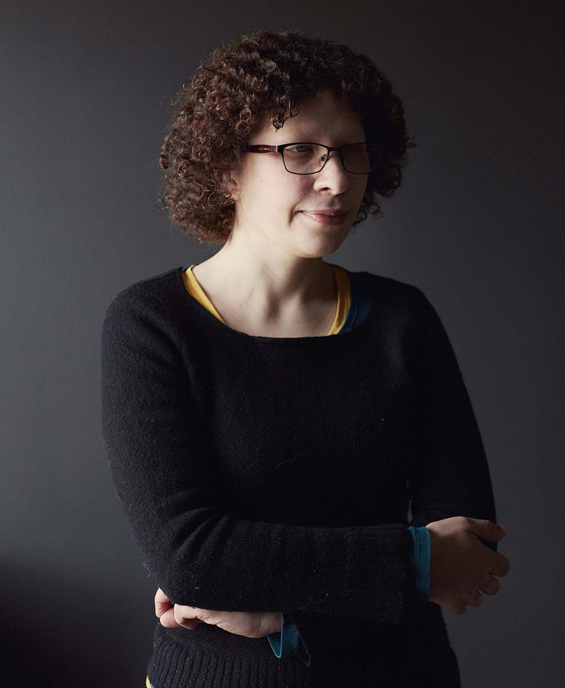

photo: Peter Bargh
FIVE QUESTIONS WITH ISNAJ DUI
When textura decided its fifth label release would be a musical treatment of John Keats' “Bright Star,” one artist's name immediately came to mind as the perfect choice: Isnaj Dui. For many years, Katie English has crafted ethereal soundscapes under the alias; in her haunting electroacoustic settings, flute and other acoustic instruments appear alongside electronic treatments in pieces that seem both ancient and contemporary. No artist, in short, struck us as better equipped to render Keats' sonnet into musical form than English; textura was therefore thrilled when she took on the project and is even more thrilled by the result. Three soundscapes distill the timeless essence of the poet's words into wondrous instrumental evocations that both retain the Isnaj Dui signature and impress as wholly original products of the imagination. textura spoke with English recently about the project and how she went about conceptualizing and creating the material for the release (available here).
1. How familiar with John Keats' poetry and “Bright Star” in particular were you before undertaking this project? Which of the poem's themes struck you as most relevant and warranting musical treatment?
I was aware of the poem but must admit wasn't overly familiar with it, just seeing it as a nice little love poem, I suppose. Once I had studied it and read more about it everything fell into place as the overriding elements of fragility and contradiction go hand in hand with my work. There is the fragility of life and love, knowing that both will end and that we have no control over when or how that happens. Then there is the contradiction of wishing to have everlasting life and love, yet also knowing that immortality, as personified by the star, is too distant to have that depth of feeling. So, do we enjoy the moment for what it is, or live forever but not experience that joy?
2. Is the creative process different for you when a project has a specific theme or concept, as in the case of Bright Star, rather than one where the focus is purely musical with no extra content involved?
Certainly at the beginning of a project there is a massive difference in approach. If I'm composing purely for the sake of it there will often be a little idea that either pops into my head, or I might just play around with instruments and sounds before settling on a starting point and go from there. When there is a concept or theme I'll start from a much more theory-based approach and map out ideas, structure, etc. before starting any recording. Quite often I'll rework things as I go as I'm always careful to not let the theory override the aesthetic and want the piece to be enjoyable to listen to; otherwise I might as well just write an essay!
Sometimes I start a piece and then realize I'm trying too hard or thinking too much so have to strip things back and have a rethink as it starts to sound stilted and doesn't sit right. With Bright Star I chose to focus on the overall feeling and themes of the poem rather than the words themselves. The elements of fragility and contradiction within the poem fit really nicely with what I do so once I'd got my head around that I felt I could be myself rather than try to fit to something else, albeit keeping the poem in mind throughout the process.

3. All of the recording's three titles reference text within the sonnet, with the sequencing of the tracks corresponding to where their titles appear in the poem. As your three settings differentiate noticeably in tone, were you deliberately attempting to capture in musical form the trajectory of the poem's content?
Although the titles refer to text within the poem, I ended up going for an overall feel of the poem rather than working through it chronologically. I decided to employ more conventional phrasing of a long-form work, with recurring motifs and variations alongside the unique elements of each piece.
The first piece sets the scene, with the initial melody becoming firstly fragmented and quite jittery, then elongated and flowing; this piece also sets the general tonality for the rest of the work. The second piece is much more uncertain and the off-kilter rhythm kind of unsettles everything before it drifts into the dissonant melodic section. This is also where we hear the ‘Swoon to Death' motif for the first time, and although we only hear it once the rest of that piece is based around the harmonies set in that theme. After the uncertainty that goes beforehand I wanted that section to be almost a realization that things will end so it is fairly sparse and feels as though it could all fall apart at any moment.
The third piece starts off with an almost procession-like dulcimer motif which acts to break up the mood a little. I like to think of that as being a little procession of celestial objects, showing off that they don't have any of the trials and tribulations of us mere mortals! The recurring low rumble and sharp bowed strings are carried over from the previous piece and segue into a drifty flute section which leads us back to the ‘Swoon to Death' theme that ends the piece. I love dissonance and close harmonies and this particular melody lends itself really nicely to that, with the harmony pushing and pulling the melody so nothing ever quite settles.
4. In what ways specifically do the tracks differ from each other in sound design and tone and in what ways are they alike?
As above, I wanted there to be certain recurring themes so it would allow the listener to drift off in one direction before being pulled back. There is the low rumble that starts the piece and kind of represents the constant yet distant star, and certain elements such as some melodic and rhythmic motifs that reappear with variations. I was also careful to allow some room to breathe and catch up a little, so there are some sections that are kept deliberately sparse rather than filled with melody. I think there is an overall feeling and aesthetic to the work, even though there are many disparate elements throughout it.
5. To my ears, the way you merge acoustic and electronic elements within an Isnaj Dui production seems a perfect fit for Bright Star, given how much Keats' work resonates across the ages. Did your approach to music creation for this project more involve determining beforehand how the material would sound or did you adopt a more explorative and intuitive approach in order to let the music develop as it naturally would?
The work as a whole came together as a mixture of written and improvised material. Although I had the basic outline and main motifs mapped out at the start, a large part of the material was written as a response to individual elements once recording was underway. That will often involve an initial improvisation that I might be fortunate enough to get ‘right' first time, or it might take a bit of refining before settling on the final version. I often turn to Morse code for rhythmic ideas as that usually results in nicely off-kilter rhythms that I wouldn't necessarily come up with otherwise, and I used a few short phrases from the poem to form the basis of a few motifs throughout the work. These initial motifs then fed into other elements, influencing either tonality or rhythm, depending on the direction of the piece.

photo: Christopher Nunn
website: ISNAJ DUI
January 2021![]()